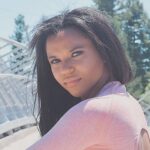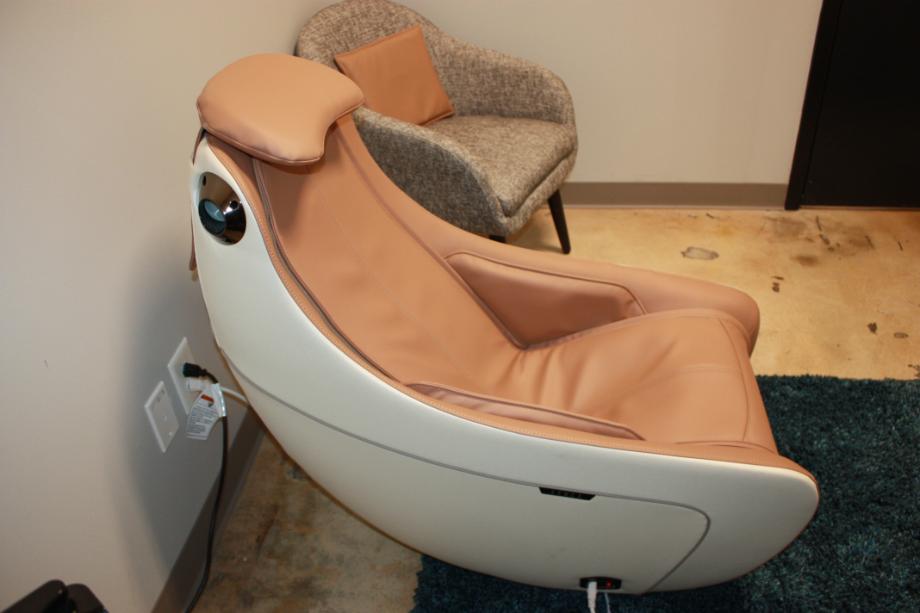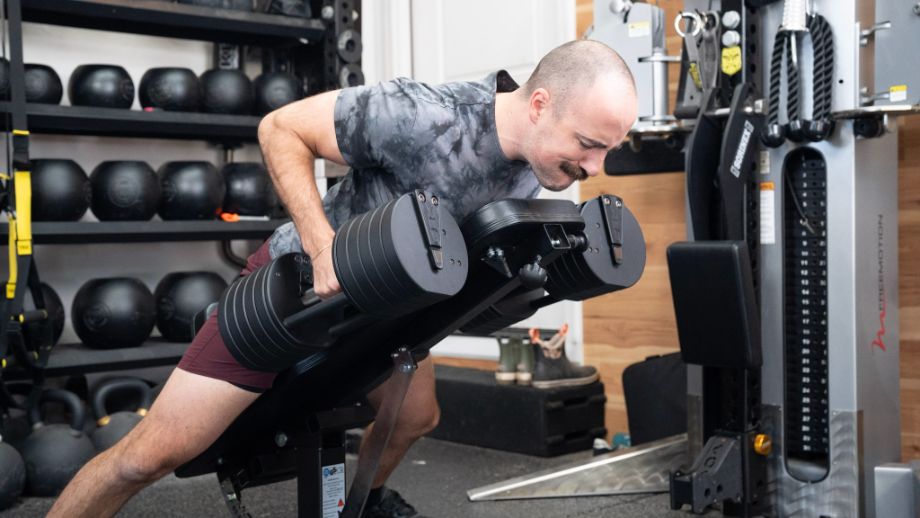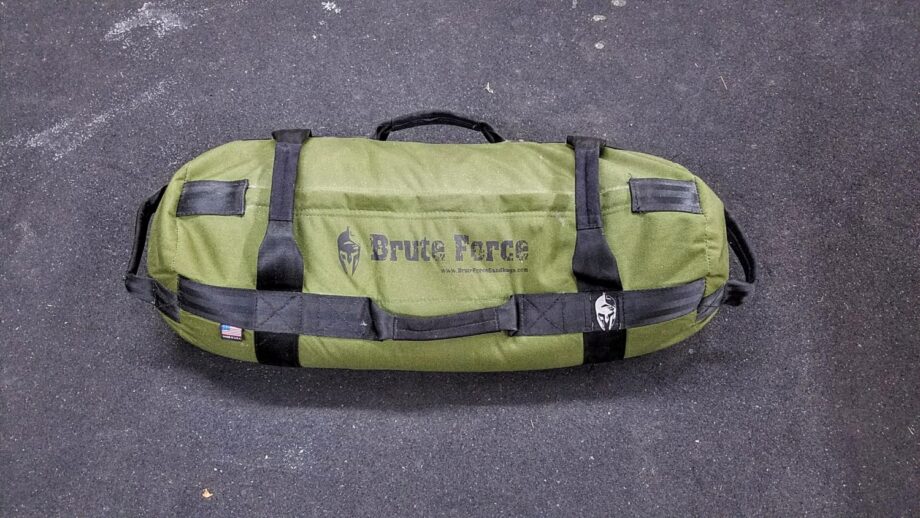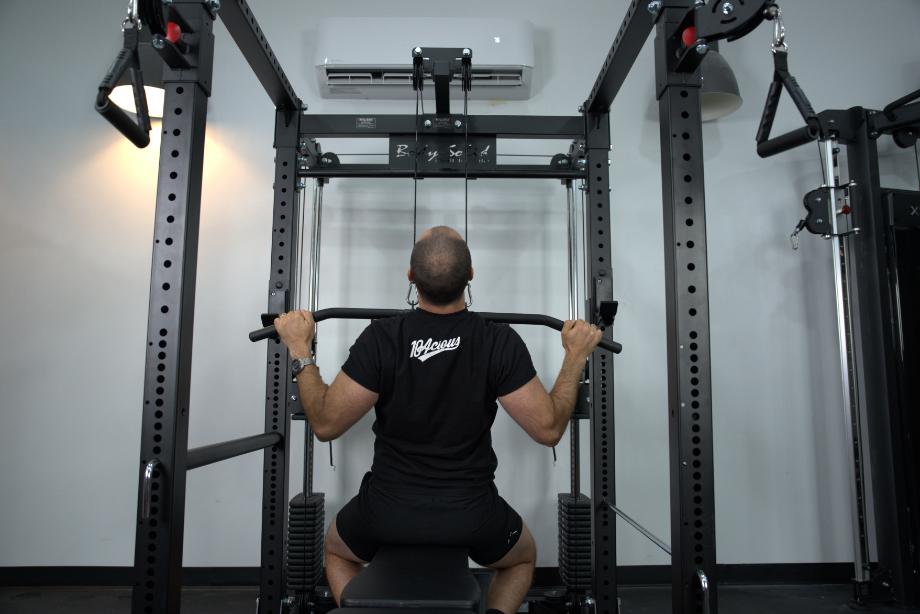Homemade protein powder may be something you’ve never even thought was possible, but with the right equipment, it can totally be a reality. Even the best protein powder sometimes gets a bad rap, but it’s actually a whole food product, which makes it a dietitian favorite for those who need a protein boost to their healthy diet.
If you’re about keeping your diet and meal plans as healthy as possible, making your own protein supplement is the peak way to go about it. It also has the potential to be much more budget-friendly, better for those with tight diet restrictions, and leaves more room for customization. No matter what your reasoning for considering homemade protein powder, you may find it’s more simple than you think.
Medical disclaimer: This article is intended for educational and informational purposes only. It is not intended as a substitute for medical advice. For health advice, contact a licensed healthcare provider.
How to Make Homemade Protein Powder
So, how to get started making DIY protein powder? Before we even get into a homemade protein powder recipe, let’s talk about the things you need to get started.
Though we’ll go over the different methods of making protein powder depending on whether you plan on making plant-based protein or whey protein, the equipment required is pretty much the same:
- Cheesecloth or muslin cloth
- Sieve or fine mesh strainer
- Heavy-duty baking sheet
- Dehydrator (for whey)
- Sifter (for plant protein)
- High powered blender or food processor
- Airtight container
Let’s start with making whey protein at home. Though there is a shortcut version, it is possible to make whey protein from scratch. Choosing the right milk is the first step. Though whole milk is typically avoided by people watching their intake of saturated fat, cholesterol, or extra calories, when making whey protein powder, whole milk and 2% milk are likely best for texture.
However, if you are tight on your macro allowance, you can still use skim milk to keep the fat content as low as possible. Furthermore, it should go without saying that plant-based beverages like soy or almond milk won’t cut it since there is no whey in non-dairy milk.
Once you have your milk, now we need the whey. For those who don’t know, whey protein gets its name from the portion of milk it’s made out of. You may have heard of it in the nursery rhyme “Little Miss Muffet,” which refers to a girl “eating her curds and whey.”
Curds are the solid portions of milk that come about once milk has “curdled,” and are made from casein protein and milk fat. This is also the portion of milk that cheese is made out of. If you’ve seen cottage cheese, you’ve seen curds, since cottage cheese is simply milk with acid added. When the curds have separated, what remains is a cloudy, yellowish liquid, and this is the good stuff—whey.
RELATED: Whey Protein Benefits
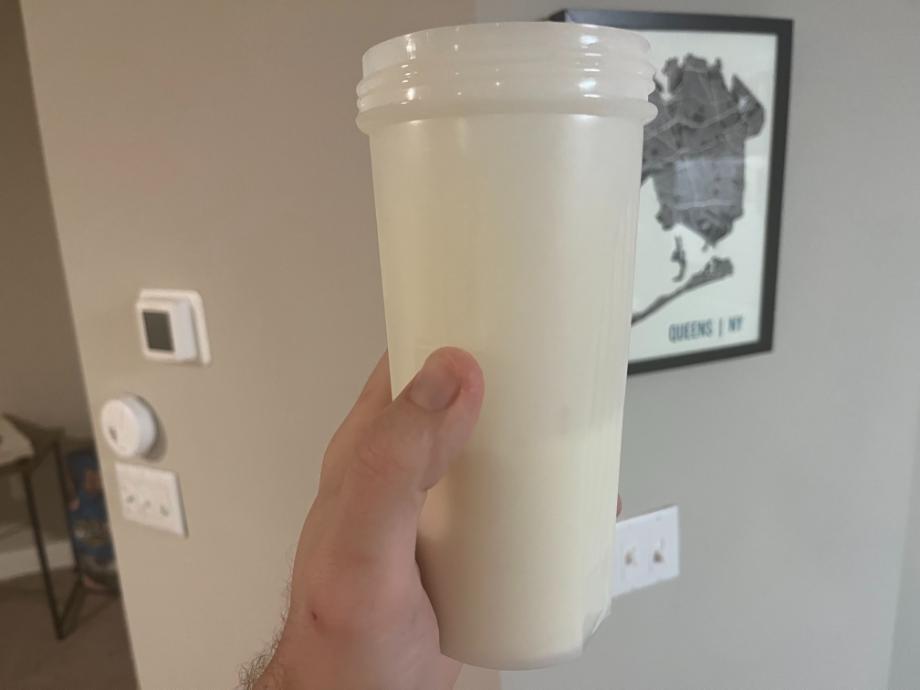
To get your whey, you need to heat your milk, then add acid like lemon juice or vinegar to force the milk to curdle. Then, you’ll use your cheesecloth or mesh strainer to separate the liquid from the solids once they form.
If you want to use the curds for cheese (tutorial not included) you can use a cheese press. Either way, the process can take hours, so it’s recommended to refrigerate your creation to prevent spoilage. No matter which method you choose, once you have your whey, it’s time to powder it.
This process can be tedious, especially if you don’t want to buy a dehydrator. So, if you would prefer to just make casein protein, which is easier, all you have to do is bake your curds at 200 degrees Fahrenheit for about 3 hours. Once dry, just blend them until they form a powder and you’re done!
For the overachievers, though, you can dry out the whey according to the instructions on your dehydrator. However, most will take about 12 hours to process. Without a dehydrator, you can boil your whey until it thickens and then spread it thin on parchment paper until it dries out, which takes about a full day. Then you can blend it into a fine powder.
All that’s left to do after that is store your powder in an airtight container. Unlike supplement companies, you don’t have the stabilizers and other compounds to keep the powder fresh for long, so an airtight container is your best shot at longevity and should keep the protein powder fresh for a couple of months as long as it is stored in a dry, cool place.
What you just made is unflavored and unsweetened protein, though. If you want a more flavorful protein shake, add cocoa powder for chocolate protein and vanilla extract for vanilla along with natural sweeteners like stevia and monk fruit to spice it up.
Making a plant-based protein powder? It’s a bit less complicated. Though many vegan and gluten-free recipes use chia seeds, flaxseed, sunflower seeds, and hemp seeds to make their own protein powder, we’ll talk about the process for making pea protein here as it will have a better amino acid profile compared to seed-based powder.
RELATED: A Registered Dietitian Breaks Down Pea Protein Benefits
Just take raw split peas and blend them using a blender or food processor until a fine powder forms. Use a sifter to separate any remaining large pieces of peas from the powder and you’re done—you have pea protein powder. Like whey, it can be stored in an airtight container. Unlike whey, it can be stored in the freezer if you need to keep it for longer than 2 to 3 weeks.
Homemade Protein Powder Recipes
Now that we’ve gone over the general process, you need a homemade protein powder recipe for more specifics. We’ve selected the following recipes with the hope they cover disparities in culinary skill, prep time, and dietary restrictions.
How To Make Homemade Natural Whey Protein Drink
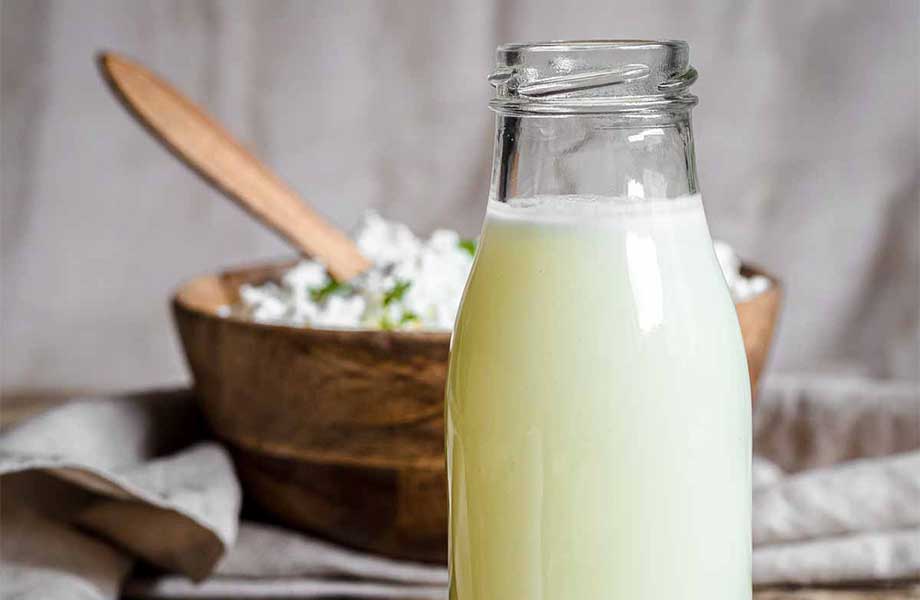
This is the option for the committed ones who want to take on the challenge of making whey totally from scratch using the process described above.
How to Make Homemade Protein Powder

A shortcut to the milk curdling and dehydration process, this is another way of making your own whey protein powder by using dried milk powder with oats and almonds to add some texture. Just be wary that the content of carbohydrates and fats (albeit healthy fats) will be higher using this method, so it may not be ideal for weight loss goals.
Simple Green Pea Powder/Flour
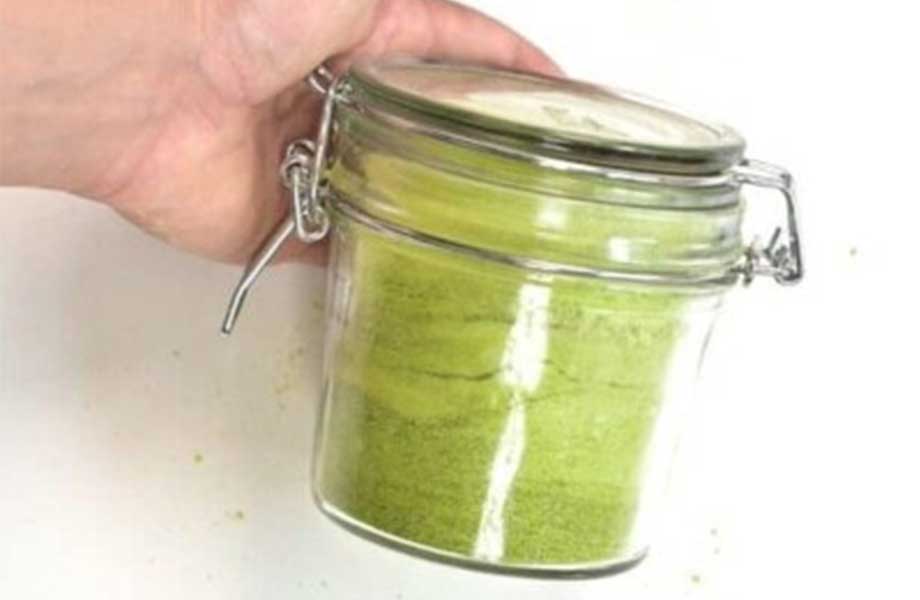
For our plant-based and vegan readers, this is a recipe to make a high-protein alternative to whey. Not only is it a whole food recipe with a short prep time, it requires minimal equipment compared to the milk powder options. Since it’s made from plants, it has more antioxidants, too.
Benefits of Homemade Protein Powder
A multitude of benefits can be gained when opting for homemade protein powder instead of the store-bought versions, ranging from both health-related to economic advantages.
Cost Efficient
The primary advantage of making one’s own high-protein supplement is the potential for lower cost. If you do not already own the equipment described earlier, then yes, the upfront costs may seem discouraging. However, once you get going, all you need is some milk (or peas) and some free time.
RELATED: Best Cheap Pre-Workout
Depending on your yield, this means you can have protein powder for well under a dollar per serving, which is around the price you’d pay for high-quality, store-bought protein powder.
This is especially true if you plan to use your protein shake as a meal replacement, which can further save on costs.
Better Quality Control
This is for those who are wary about the additives, potential for exposure to banned substances, and artificial sweeteners, flavors, and colors in protein powder. Making it at home is the one surefire way to ensure you know exactly what your protein powder is made of.
Personalization
There are entire services that allow you to make your own custom protein powder based on your goals, but it can be quite pricey. If you make it at home, you can customize it as much as you like, from the flavor right down to the scoop size.
RELATED: Gainful Protein Powder Review
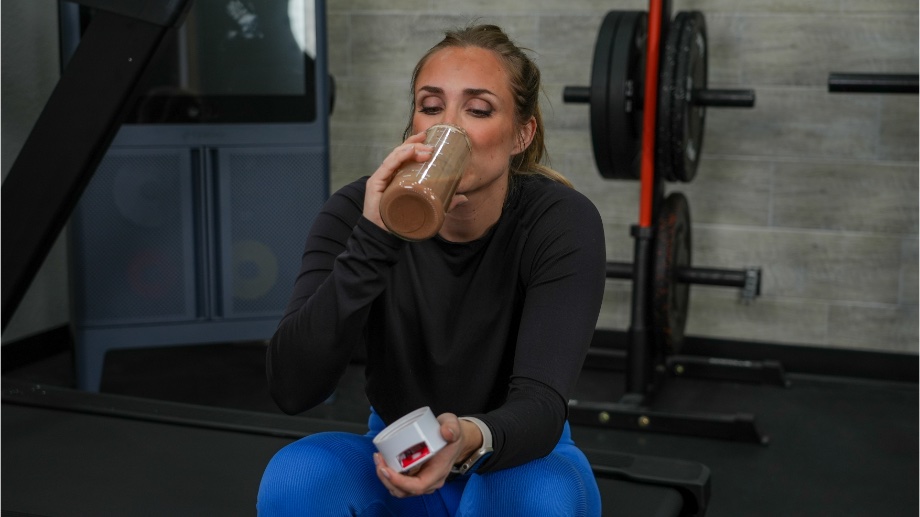
For people who have specific dietary needs, kcal goals, or macros to follow, making your own protein-rich powder can beat shopping around for a powder that has the exact carb, fat, and grams of protein you’re looking for. This customization can be achieved depending on protein sources you choose, type of milk, and other ingredients added to your powder mixture.
Homemade Protein Powder: Things to Consider
As you may imagine, making your own protein powder isn’t exactly mainstream for a reason: It can be more demanding than it looks. Here are some things to consider before putting yourself up to the task:
Culinary Skill
If you’ve had issues in the past following even the most simple healthy recipes, it may be challenging to make your own protein powder, especially whey. It requires a fair bit of food science and patience along with knowledge on how to use the required equipment.
Time Restrictions
If you plan on making whey and don’t have a dehydrator, making your own protein powder can take a day or more. Regardless of which method you choose, it’s likely to take a few hours to get your final product, which is more time than many people have to spare to honor their meal plans.
RELATED: High-Protein Meals
Furthermore, there is an issue with time in shelf life. Say what you will about certain preservatives, the one benefit they have is they can allow you to hang onto your tubs and bags of protein powder for long periods of time. Thus, the more natural the product is, the faster it can spoil. So, if you don’t plan on using your homemade protein powder often, all of that hard work could go to waste.
Homemade Protein Powder: Final Thoughts
Whey protein is an excellent source of amino acids and calcium, but the high-quality ones can get pricey if you use them a lot. Making your own can help with that and you can get a further protein boost in your diet by adding Greek yogurt, peanut butter, and other protein sources to your protein smoothie recipes.
Though making protein powder from scratch is admirable, as a dietitian I’m still obligated to mention that a healthy diet full of fruits and vegetables is still needed, as nutrients an active body needs like vitamin C, vitamin A, and antioxidants can’t be obtained from whey protein. So, be sure you’re still maintaining a healthy diet and check with a dietitian if you need to keep your carb, fat, and protein intake in check for weight loss.
Homemade Protein Powder: FAQs
Can I make protein powder at home?
With the right equipment and proper ingredients, it’s perfectly possible to make your own protein powder at home.
Is it cheaper to make your own protein powder?
This depends on the ingredients you choose. If you plan to make a vegan protein powder using chia seeds, flaxseed, pumpkin seeds, and/or sunflower seeds, it could be quite expensive. However, pea and whey homemade protein powders are likely more cost efficient.
How do you make homemade whey protein powder?
You can make your own whey protein by separating curds and whey from milk, then dehydrate that whey to make your own powder.
What ingredients make a good protein powder?
To make a good protein powder, all you really need is some high quality milk and an acid source like vinegar or lemon juice. You can also make a vegan protein powder using peas.
These statements have not been evaluated by the Food and Drug Administration. This product is not intended to diagnose, treat, cure, or prevent any diseases.

